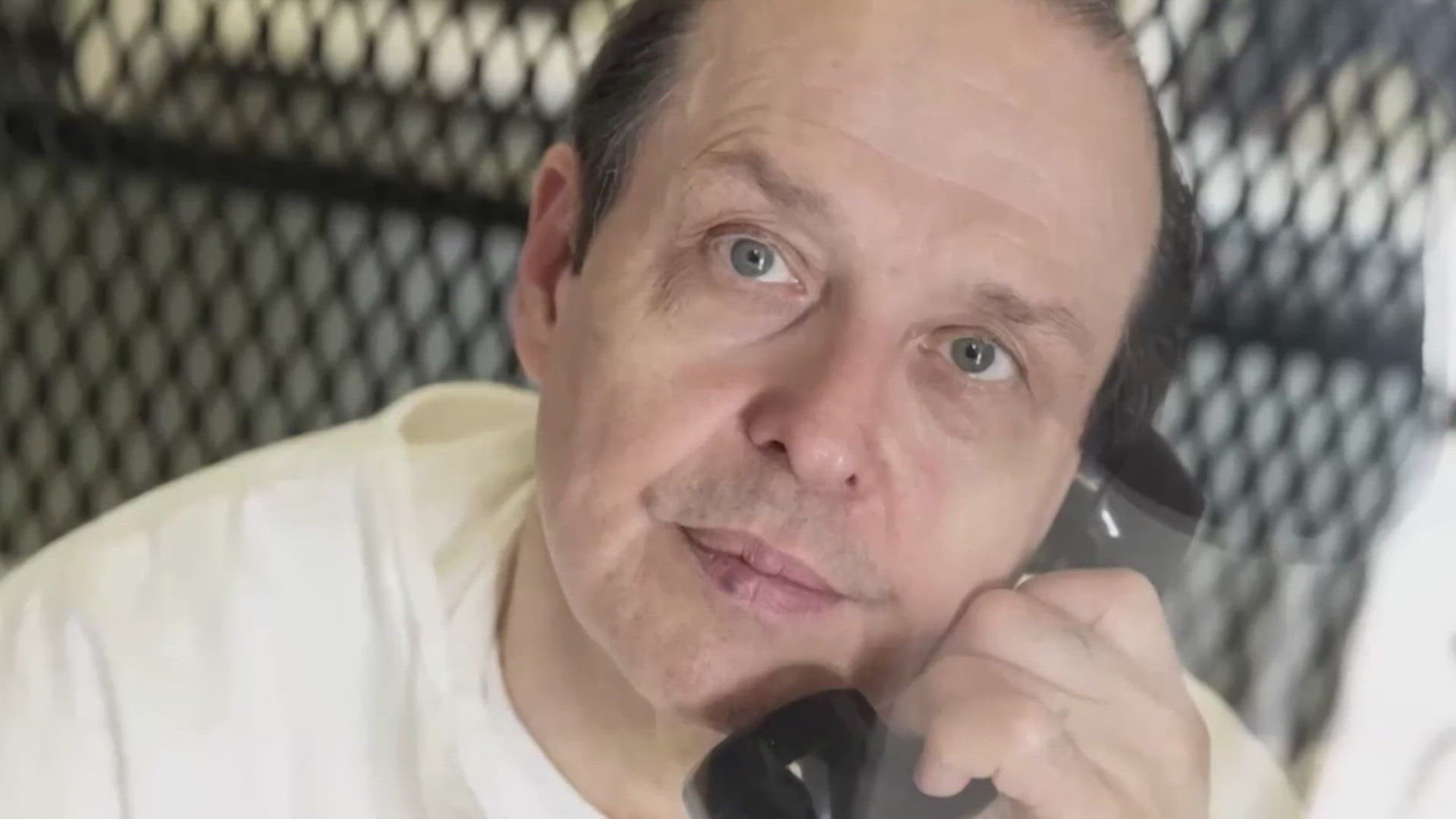AUSTIN, Texas — The Texas Supreme Court on Thursday night blocked the execution of Robert Robertson.
The decision came after a day of attempts to stop the state from carrying out his execution. The Texas Supreme Court added that there's no clear precedent on how to proceed.
It's unclear what will happen in the future, but on Thursday night, Roberson was transferred back to the Polunsky Unit. Officials said when he got the news, Roberson prayed and proclaimed his innocence.
"I had the opportunity to go back there and speak with him," TDCJ Communications Director Amanda Hernandez said. "He was shocked, to say the least. He praised God and he thanked his supporters."
Earlier Thursday night, hours after a Travis County judge issued a temporary restraining order that initially delayed the controversial execution, the Texas Court of Criminal Appeals overturned it. That means the execution was back on until the Texas Supreme Court ruling.
"I was a nervous wreck," said Roberson's sister, Jennifer. "He was comforting me, telling me to be obedient to God, stay strong, keep the faith, keep the hope. He's always been like that. He's always the strong one."
The Texas Supreme Court ruling was the latest turn in a flurry of developments unfolding in a desperate attempt to delay the execution.
That ruling by the Texas Court of Criminal Appeals was immediately appealed to the Texas Supreme Court as supporters of Roberson sought to spare him from execution for his conviction in killing his 2-year-old daughter, Nikki Curtis, in 2002. The Texas Supreme Court ended up issuing a stay in the case.
Gov. Greg Abbott has the authority to delay Roberson’s punishment for 30 days. But Abbott has halted only one imminent execution in nearly a decade as governor.
It's important to note -- the Texas Supreme Court has the final say on civil matters, while the Texas Court of Criminal Appeals has the final say on criminal ones. The House members trying to save Roberson are arguing over the legal standing of the subpoena they issued on Wednesday.
Roberson's daughter was diagnosed with shaken baby syndrome after her death. But experts, lawmakers and the lead detective in the girl’s case say the science supporting Roberson’s death sentence no longer holds up — and the state’s “junk science” law should have already halted his execution.
The Travis County judge issued a temporary restraining order on Thursday, the day of execution, to delay it. She based her decision on a stunning move by a Texas House committee that issued a subpoena for Roberson to testify next week.
“It’s an unprecedented subpoena and an unprecedented case," Benjamin Wolff, director of the Texas Office of Capital and Forensic Writs, said on Wednesday.
During its meeting in Austin on Wednesday, the bi-partisan committee heard testimony about Roberson’s case and whether a 2013 law created to allow people in prison to challenge their convictions based on new scientific evidence was ignored in Roberson’s case.
The state says it plans to appeal the TRO ruling. Attorney General Ken Paxton’s office, which represents the TDCJ in late-stage capital litigation, could also move to quash the subpoena which would escalate the issue up to the state’s highest criminal court.
“It’s a dog and pony show,” criminal appeals attorney Brian Wice said. “There is no way on earth the Court of Criminal Appeals, the toughest kids in the schoolyard, are going to let this happen.”
"If state officials continue to appeal, we don't want to be in a position where somebody innocent is executed and months from now the legislature is able to go back and clarify and make fixes to the law, which was intended for somebody exactly like Robert Roberson," attorney Vanessa Plotkin with the Innocence Project said.
Around the same time as the Austin judge's decision, the U.S. Supreme Court denied Roberson's request for a stay, a move that didn't affect the TRO. Justice Sonia Sotomayor wrote to urge Texas Gov. Greg Abbott to grant a 30-day delay but Abbott remained silent.
Execution puts spotlight on shaken baby syndrome
Roberson would be the first person in the country executed for allegedly shaking a baby to death.
His case has renewed debate over shaken baby syndrome, known in the medical community as abusive head trauma.
The diagnosis refers to a serious brain injury caused when a child’s head is hurt through shaking or some other violent impact, like being slammed against a wall or thrown on the floor.
Roberson’s supporters don’t deny head and other injuries from child abuse are real. But they say doctors misdiagnosed Curtis’ injuries as being related to shaken baby syndrome and that new evidence has shown the girl died from complications related to severe pneumonia.
Roberson’s attorneys say he was wrongly arrested and later convicted after taking his daughter to a hospital. They say she had fallen out of bed in Roberson’s home after being seriously ill for a week.
Roberson’s lawyers have also suggested his autism, which was undiagnosed at the time of his daughter’s death, was used against him as authorities became suspicious of him because of his lack of emotion over what had happened to her. Autism affects how people communicate and interact with others.
The American Academy of Pediatrics, other medical organizations and prosecutors say the diagnosis of shaken baby syndrome is valid and that doctors look at all possible things, including any illnesses, when determining if injuries were attributable to it.

